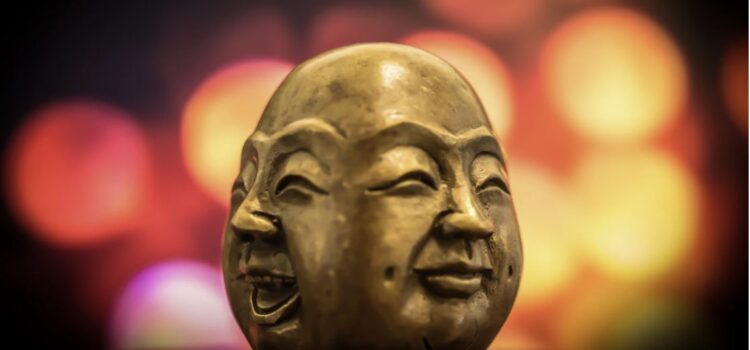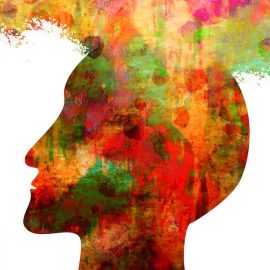

This article is an excerpt from the Shortform book guide to "A New Earth" by Eckhart Tolle. Shortform has the world's best summaries and analyses of books you should be reading.
Like this article? Sign up for a free trial here .
What exactly are emotions? How do emotions relate to thoughts?
According to spiritual teacher Eckhart Tolle, emotions are our bodies’ responses to our thought elements (morals, values, and beliefs). He says that our emotions aren’t caused by situations, but by the thoughts, we have about the situation. Over time, he argues, recurring thoughts and emotions become part of our identity and become the lens through which we interpret the world.
Here’s how Eckhart Tolle explains emotions and their role in identity formation.
Emotional Elements
According to Eckhart Tolle, emotions contribute to the formation of our self-image. When we experience a recurring thought and consequent emotional reaction, it becomes part of our identity. And, the more strongly we identify with our thought elements, the stronger our emotional reactions will be when things don’t meet our expectations.
Furthermore, each time we have a negative emotional reaction to a situation, it affirms the thought that caused the emotion. When the thought pattern is affirmed, we’re rewarded with a feeling of superiority for being “right,” and we will be more likely to experience the same thought and emotion in similar situations in the future.
For example, if we operate on the underlying thought element that no one’s trustworthy, we’re likely to interpret honest mistakes as deceit. If someone mistakenly takes our jacket thinking it’s theirs, we’re going to assume they were trying to steal it from us. Then, we will have an emotional reaction that affirms this belief—“they tried to steal my jacket and play it off as a mistake. I knew it, no one is trustworthy.” This will make us feel superior for being “right” and we will now be more likely to experience the same misinterpretation in the future.
| Emotions Are “Constructs” of the Brain In How Emotions Are Made, Lisa Feldman Barrett argues that, contrary to popular belief, emotions are not an instinctive response to outside events, but instead are concepts constructed by the brain about how to react and cope in different situations based on our past experiences. This very closely aligns with Tolle’s assertion that emotions are our body’s responses to our subconscious, underlying thoughts about a situation—Barrett just refers to these “thoughts” as “concepts that are constructed by the brain.” Barrett calls this the theory of constructed emotions. Barrett elaborates that whenever we experience external stimuli, the brain needs to process what it’s seeing to formulate an appropriate response. It does this by comparing these stimuli to past similar experiences and forming a “concept” of what the stimuli are and how to respond. For example, through life experience, our brains have learned that drops of water randomly falling from the sky are called “rain,” and are not a threat. We then store this concept of “rain” so we can appropriately explain and respond to the phenomenon in the future. Barrett argues that emotions are concepts of the brain just like rain is. When we witness an external event, we experience certain bodily sensations and then form a “concept” of what the bodily response is and when it’s appropriate. Just like water falling from the sky is “rain,” an intense feeling in our gut after a loss is “sadness.” In the future, our brains will tell us that the correct response to a loss or tragic situation is to be sad. Further, Barrett explains that emotions function as self-fulfilling prophecies—our brain makes a prediction about how we should feel in a certain situation based on a concept, and when we react in this way, the concept is confirmed. Thus, the emotional reaction is more likely to occur when we face similar stimuli in the future. Tolle makes the same assertion—emotional reactions are affirmations of our underlying thoughts, and when the emotions affirm the thought, we’re more likely to react the same way again. |
The Pain-Body
Tolle explains that our emotional identity is housed in an energy form called the pain-body—the part of our mind that collects and stores all the negative emotional experiences we’ve had in our life. The pain-body collects these emotional experiences, and the next time a similar situation occurs, it reminds us of our previous negative thoughts and emotions and prompts us to react in the same way. This suffering ultimately strengthens the ego because it feeds on negativity.
The pain-body not only stores these emotions but also feeds off them. So, the more we experience negative emotions, the denser and more reactive the pain-body gets, and the bleaker our emotional identity and perception of the world become. Additionally, the denser the pain-body becomes, the more it craves further negativity to sustain itself, and thus the more it seeks out, recognizes, and creates negative thoughts and emotions.
Therefore, our pain-body causes dysfunction by trapping us in an endless cycle of suffering that affects us and those closest to us.

———End of Preview———
Like what you just read? Read the rest of the world's best book summary and analysis of Eckhart Tolle's "A New Earth" at Shortform .
Here's what you'll find in our full A New Earth summary :
- Eckhart Tolle's guide on how to evaluate your consciousness
- How to overcome ego-driven thoughts and behaviors
- Why humanity must undergo an evolution of consciousness






